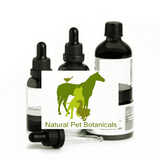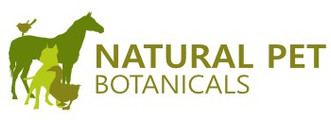

Kidneys - Renal Cell Carcinoma Set of 7

Kidneys - Renal Cell Carcinoma Set of 7
People and Pets with CKD commonly have low albumin levels because of the loss of protein (albumin) in urine.
Medical term its called Hypoalbuminemia (Low Albumin)
What is Low Blood Albumin?
Low blood albumin, or hypoalbuminemia, is not itself a disease but is a symptom of an underlying disease or other causative factor.Since the liver is responsible for manufacturing albumin and maintaining optimum levels in the blood, liver disease is often suspected.
However, low blood albumin can also be the result of malfunctioning kidneys, digestive problems such as inflammatory bowel disease (IBD), pancreatitis, malnutrition, or extensive damage to the skin from burns, infection or mites. Because diagnosing the underlying cause is critical to proper natural solution, a trip to the veterinarian is in order.
Albumin is a blood protein that is manufactured in the liver. The main functions of albumin are circulating necessary molecules throughout the bloodstream in support of metabolic processes and binding with water to stabilize blood pressure by preventing leakage from blood vessels. Low levels of albumin in the blood can be caused by inadequate production of albumin in the liver or by loss of albumin through the kidneys, digestive tract, leaking blood vessels, or seeping skin. While fluid leaking from the skin is easy to identify as a problem, other less obvious signs of low blood albumin range from swelling of the chest or abdomen, puffiness in the legs, lethargy, lack of appetite or vomiting.
Symptoms of Low Blood Albumin in Cats
Since low blood albumin is essentially a side effect of some other underlying malady, symptoms of the condition will vary depending on the cause.
Cats with low blood albumin may exhibit:
Swelling of the abdomen
Distended chest cavity
Edema in the limbs, which is swelling from leaking fluid rather than from injury or trauma
Panting, or shortness of breath
Lethargy
Poor appetite
Vomiting
Diarrhea
Fluid seeping from the skin due to injury, infection or infestation
Causes of Low Blood Albumin in Cats
Hypoalbuminemia is caused by a disruption of albumin production in the liver, or through a depletion of the protein via blood loss or blood disease.
The most common causes include:
Liver disease
Cholangiohepatitis, which is a malfunction of the liver that also includes the pancreas and/or gallbladder
Chronic pancreatitis
Inflammatory bowel disease
Kidney disease
Intestinal parasites
Malnutrition or diet too low in protein
Pyoderma, or skin infection
Skin parasites such as demodectic or sarcoptic mange
Widespread burns to the skin
Low albumin levels can result in swelling of the feet or hands, fatigue, loss of appetite and dry/itchy skin.
Astragalus herb has been shown to increase albumin levels in the blood so may help with reducing the symptoms caused by low albumin.* Reference: https://www.kidneycoach.com/herbal-medicine/astragalus-and-its-role-in-chronic-kidney-disease?
Natural Pet Botanicals Recommendations formulas are both effective and gentle in supporting the whole body, you treat your own animal or pet at home, and in almost every single case we improve vitality and longevity. If you are dealing with any metabolic or immune issue with your pet, we suggest that you contact us for a consultation so we can ensure you are using the right products.
1. CF-1 (352) 50ml
2. CF-2 50ml
3. Back Eze 352-3 formula 50ml
4. Electrolytes - Trace minerals 19-3 50ml
5. Astragalus 100ml
6. Activated Charcoal Powder - 20 caps
INGREDIENTS AND BENEFITS
Formula 1.
Astaxanthin (Microalgae Haematococcus pluvialis 0.1) (Scientific studies reviewed the role of ROS in the various stages of cancer development and provided evidence that astaxanthin, derived from nature, are highly effective in eliminating cancer cells. Astaxanthin is used as a dietary supplement for human, animal, and aquaculture consumption)
Club Moss (Lycopodium clavatum 200C)
Poke Root (Phytolacca 200C)
Condor plant (Cundurango 200C) (traditionally used for lymph drainer, stomach, ulcer, breast, tongue tumors, stricture of the esophagus)
Ash mineral (Hekla Lava 12X, 200C)
Ruta whole plant (Ruta Graveolens 6C)
Calcarea Phosphorica (Calcarea Phosphorica 4X)
in 20% USP alc. in purified water.
Reference:https://www.healthline.com/health/poke-root
Reference:https://pubmed.ncbi.nlm.nih.gov/12639929/
Reference:https://pubmed.ncbi.nlm.nih.gov/15026348/
Reference: https://www.researchgate.net/publication/256090732_Ruta_graveolens_from_Traditional_System_of_Medicine_to_Modern_Pharmacology_an_Overview
CANCER RESEARCH
https://pubmed.ncbi.nlm.nih.gov/10798217/
Antitumor activity of astaxanthin and its mode of action – PubMed (nih.gov)
https://pubmed.ncbi.nlm.nih.gov/10470126/
A comparison of the anticancer activities of dietary beta-carotene, canthaxanthin and astaxanthin in mice in vivo – PubMed (nih.gov)
https://www.timesgazette.com/2020/03/04/is-it-a-cure-for-cancer-and-more/
Is it a cure for cancer and more? – The Times Gazette
Formula 2.
Astaxanthin (Microalgae Haematococcus pluvialis 30X, 0.1) (Scientific studies reviewed the role of ROS in the various stages of cancer development and provided evidence that astaxanthin, derived from nature, are highly effective in eliminating cancer cells. Astaxanthin is used as a dietary supplement for human, animal, and aquaculture consumption)
CANCER RESEARCH
https://pubmed.ncbi.nlm.nih.gov/10798217/
Antitumor activity of astaxanthin and its mode of action – PubMed (nih.gov)
https://www.sciencedirect.com/science/article/abs/pii/S0024320502015229
Contribution of the antioxidative property of astaxanthin to its protective effect on the promotion of cancer metastasis in mice treated with restraint stress – ScienceDirect
https://www.ncbi.nlm.nih.gov/pmc/articles/PMC4515619/
Multiple Mechanisms of Anti-Cancer Effects Exerted by Astaxanthin – PMC (nih.gov)
https://www.ncbi.nlm.nih.gov/pmc/articles/PMC6266165/
Astaxanthin Prevents Human Papillomavirus L1 Protein Binding in Human Sperm Membranes – PMC (nih.gov)
https://pubmed.ncbi.nlm.nih.gov/22080479/
Antitumour Effects of Astaxanthin and Adonixanthin on Glioblastoma – PubMed (nih.gov)
https://pubmed.ncbi.nlm.nih.gov/30287735/
Payne-Eze 32 formula
Back-Eze formula
Formula 4.
Electrolytes -Trace minerals 19-3 50ml liquid
Formula 5.
Astragalus (Astragalus propinquus) *Low albumin levels - hypoalbuminemiaPeople and Pets with CKD commonly have low albumin levels because of the loss of protein (albumin) in urine. Low albumin levels can result in swelling of the feet or hands, fatigue, loss of appetite and dry/itchy skin. Astragalus has been shown to increase albumin levels in the blood so may help with reducing the symptoms caused by low albumin.
Reference: https://www.kidneycoach.com/herbal-medicine/astragalus-and-its-role-in-chronic-kidney-disease?
Formula 6.
Activated Charcoal Powder (20 capsules)
Formula 7.
C Oil 13-5(2)10ml (Cumin Oil)
Need more advice or have more questions? Contact us for a FREE consultation with one of our fully qualified practitioners.
FDA DISCLAIMER
The statements made regarding these products have not been evaluated by the Food and Drug Administration. The efficacy of these products has not been confirmed by FDA-approved research. These products are not intended to diagnose, treat, cure or prevent any disease. All information presented here is not meant as a substitute for or alternative to information from your health care practitioners. The Federal Food, Drug, and Cosmetic Act require this notice.













